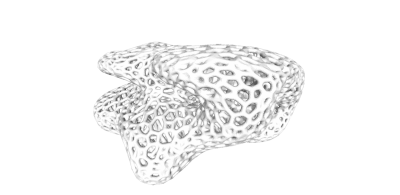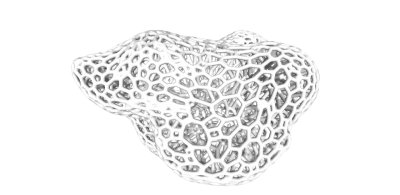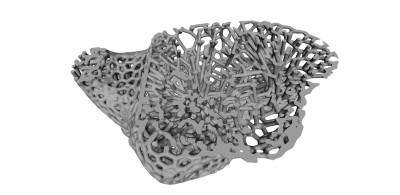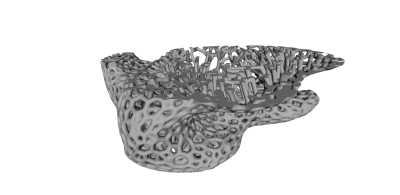- Joined
- Mar 24, 2016
- Messages
- 232
- Reaction score
- 244
Hey everyone, so I came up with a cool idea/experiment I'd like to try. Thought I'd post about it here.
I've been heavily involved in the 3D Printing scene since it's inception pretty much. I've designed, built, and owned many 3D printers over the years, and these days I also operate a 3D Hub doing printing services for others.
Anyway, I thought:
"Live rock provides one main purpose: Being porous, in order to allow the most surface area possible for life to adhere to, and grow within, essentially a solid structured form of substrate. The bacterial cultures and life that grows within this "structure" then provides natural filtration (again due to surface area and water permeability)"
There are other benefits as well, such as calcium solids being dissolved into the tank, helping with water buffering and so on. But these depend on the specific type of rock for example. Not all rock is based on actual dead coral skeleton.
In addition I've heard a few anecdotal mentions that things like giant piles of PVC pipe, have become "live" and actually worked for filtration, as well as people making artificial rock from a "cement" of sorts, made from substrate.
This all led to the thought:
"Why can't I 3D Print a specially designed structure to serve as live rock?"
Since we already know ABS is relatively reef safe. And ABS plastic is commonly used in 3D Printing, there is no reason it shouldn't work
And 3D Printing allows for creation of complex internal structures that may actually be beneficial. Not to mention the ability to totally customize look and feel. And once the rock begins to grow/support much life, it won't look any different than "real" live rock.
So I quickly whipped up this "proof of concept" design:
http://www.thingiverse.com/thing:1488701
Which I've release on creative commons license. Which has the following features:
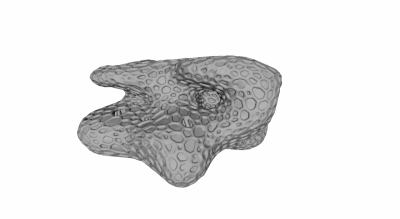
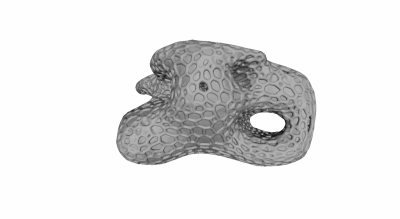
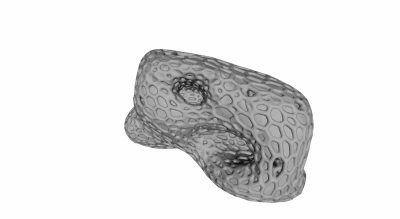
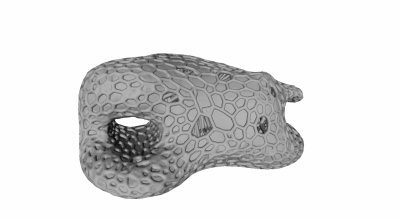
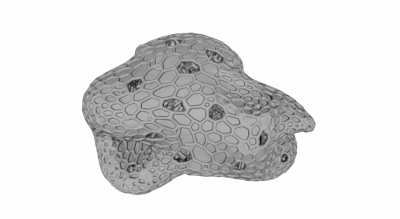
Right now this is far from "cheap", but it's meant to be a proof of concept. Right now it's about 20cm long, by 15cm wide, by 10cm tall. So it's a medium size rock. At this size it's about $10 - $20 worth of plastic to print it on a home printer in standard ABS. If using a printing service, it would likely cost more than that.
That said, this is not optimized. Until I've been able to test things like the size/density of the internal structure can be tweaked to find an optimal balance of material usage, and life-supporting capabilities.
So optimized this might get down to the $5 - $10 range, which could be comparible to dry rock in pricing.
The real question is how effective it is at supporting life, and natural filtration.
Right now my tank isn't even finished being built yet, so I am nowhere near being able to test this. Once I get my tank up and running, cycled, and stable, I will toss one of these into the tank to see if I can turn it "live" and how it looks... Then maybe using a QT tank or something, we can try and test it's filtering capabilities.
But if anyone else is interested in testing this out, I'd love to see how it comes together. The file is free to download and try out, and if anyone's interested I'd be willing to print one of these out for you for just my cost in plastic, and shipping. Ideal situation is someone with a mature reef, and skills, and their own 3D Printer
My first test may also experiment with size a bit to see how small the internal structure can get and still print reliably. That can help me tweak the file for more efficient printing at larger sizes.
Anyway, any comments, feedback would be welcome. I'm interested to hear what anyone else thinks of this little experiment.
I've been heavily involved in the 3D Printing scene since it's inception pretty much. I've designed, built, and owned many 3D printers over the years, and these days I also operate a 3D Hub doing printing services for others.
Anyway, I thought:
"Live rock provides one main purpose: Being porous, in order to allow the most surface area possible for life to adhere to, and grow within, essentially a solid structured form of substrate. The bacterial cultures and life that grows within this "structure" then provides natural filtration (again due to surface area and water permeability)"
There are other benefits as well, such as calcium solids being dissolved into the tank, helping with water buffering and so on. But these depend on the specific type of rock for example. Not all rock is based on actual dead coral skeleton.
In addition I've heard a few anecdotal mentions that things like giant piles of PVC pipe, have become "live" and actually worked for filtration, as well as people making artificial rock from a "cement" of sorts, made from substrate.
This all led to the thought:
"Why can't I 3D Print a specially designed structure to serve as live rock?"
Since we already know ABS is relatively reef safe. And ABS plastic is commonly used in 3D Printing, there is no reason it shouldn't work
And 3D Printing allows for creation of complex internal structures that may actually be beneficial. Not to mention the ability to totally customize look and feel. And once the rock begins to grow/support much life, it won't look any different than "real" live rock.
So I quickly whipped up this "proof of concept" design:
http://www.thingiverse.com/thing:1488701
Which I've release on creative commons license. Which has the following features:
- Textured surface to support life growing on it
- Organic look/feel
- Some tunnels/caves
- fully hollow shell with internal structure
- Internal Structure designed for maximum surface area but easy flow-through
- Many "holes" in outer shell into internal structure to allow water flow-through and small life to get in/out
- Texturing from printing process should further improve surface area/texture
- Possibility due to the structure/skin to fill it with coarse substrate via the holes, which could further improve it's life sustaining and filtering abilities, not to mention add some natural calcium. (also might help weigh it down lol)





Right now this is far from "cheap", but it's meant to be a proof of concept. Right now it's about 20cm long, by 15cm wide, by 10cm tall. So it's a medium size rock. At this size it's about $10 - $20 worth of plastic to print it on a home printer in standard ABS. If using a printing service, it would likely cost more than that.
That said, this is not optimized. Until I've been able to test things like the size/density of the internal structure can be tweaked to find an optimal balance of material usage, and life-supporting capabilities.
So optimized this might get down to the $5 - $10 range, which could be comparible to dry rock in pricing.
The real question is how effective it is at supporting life, and natural filtration.
Right now my tank isn't even finished being built yet, so I am nowhere near being able to test this. Once I get my tank up and running, cycled, and stable, I will toss one of these into the tank to see if I can turn it "live" and how it looks... Then maybe using a QT tank or something, we can try and test it's filtering capabilities.
But if anyone else is interested in testing this out, I'd love to see how it comes together. The file is free to download and try out, and if anyone's interested I'd be willing to print one of these out for you for just my cost in plastic, and shipping. Ideal situation is someone with a mature reef, and skills, and their own 3D Printer
My first test may also experiment with size a bit to see how small the internal structure can get and still print reliably. That can help me tweak the file for more efficient printing at larger sizes.
Anyway, any comments, feedback would be welcome. I'm interested to hear what anyone else thinks of this little experiment.








